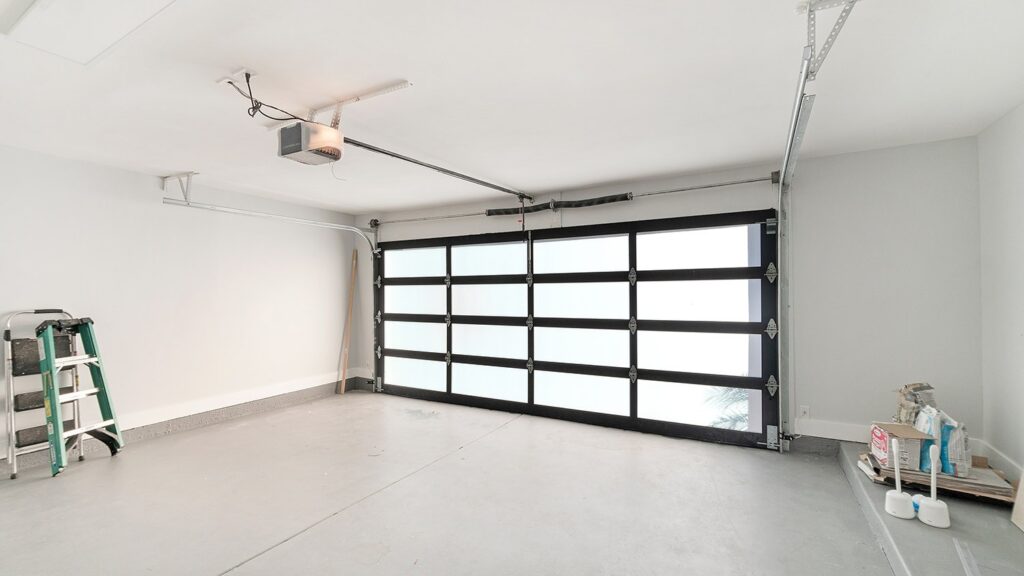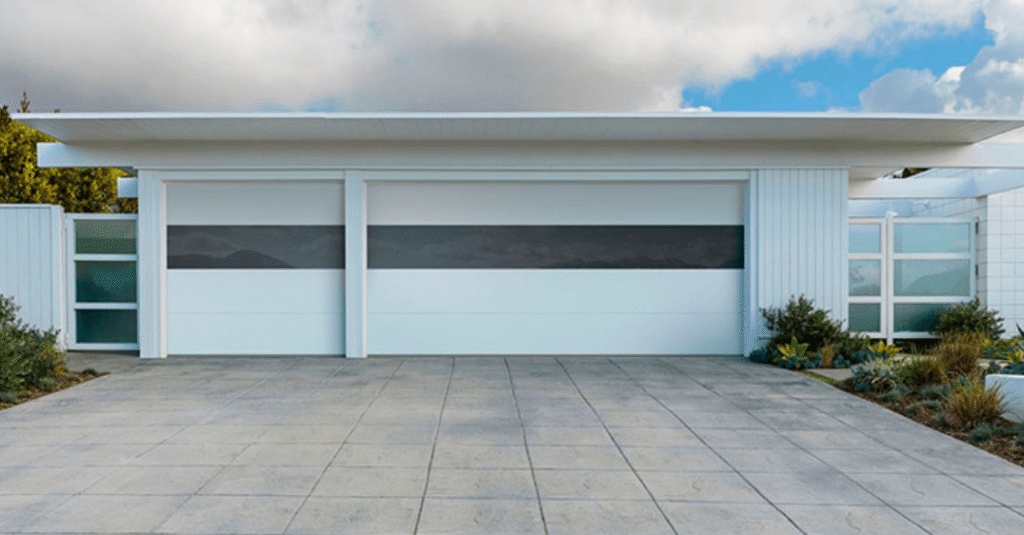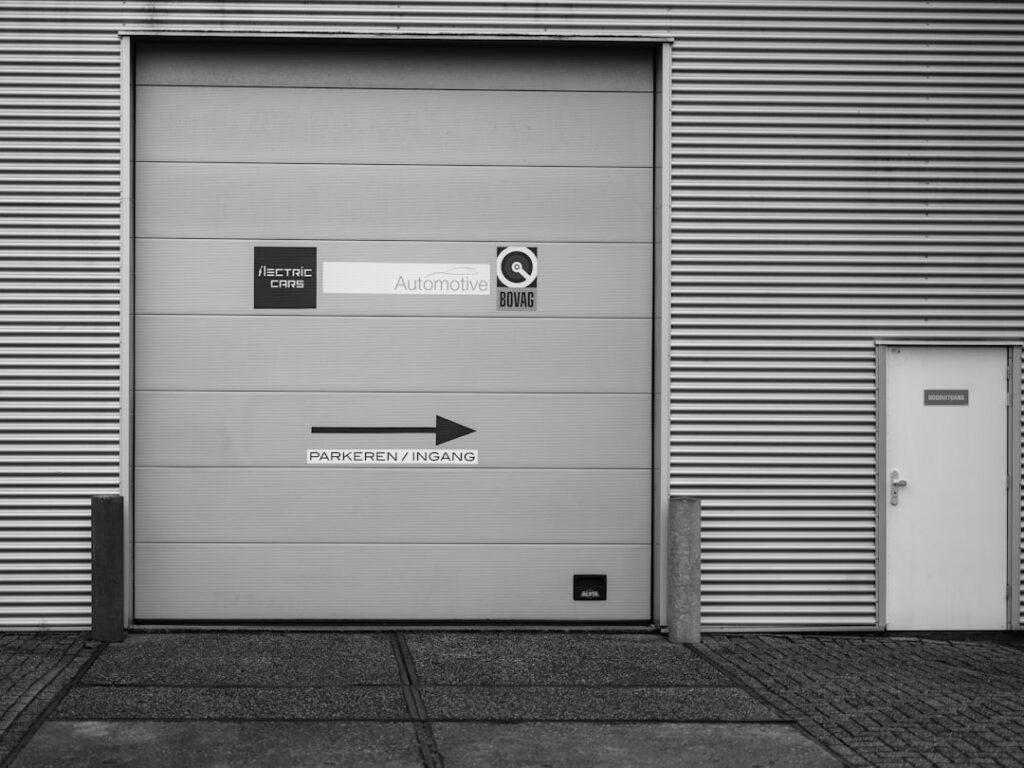
Choosing the right garage door style is more than a matter of aesthetic preference; it can impact your home’s curb appeal and functionality. Illinois homeowners have a variety of styles to choose from, each offering unique benefits and potential drawbacks. Let’s explore some popular garage door styles and the factors that might influence your choice, such as climate, maintenance requirements, and architectural style of your home.
Traditional Raised-Panel Doors

When you think of a garage door, this is probably the style that comes to mind. Raised-panel doors have a classic look with symmetrical rectangles that add a touch of elegance to any home. They’re popular throughout Illinois for their timeless appeal and versatility, fitting seamlessly with most architectural styles. The durability and ease of maintenance make them a practical choice for many homeowners. If your raised-panel door ever needs professional garage door repair, you can rely on PrimeGDR, conveniently located at 25975 N Diamond Lake Rd, Unit 111, Mundelein, IL 60060, for fast and reliable service.
However, their springs and panels can wear out over time, especially in harsh weather conditions. The harsh winters and humid summers in Illinois can take a toll on these doors, leading to potential issues such as rust on the hardware or warping of the panels. Regular maintenance, such as lubricating moving parts and checking for signs of wear, can help extend their lifespan.
Carriage House Doors

Want to add some rustic charm to your home? Carriage house doors might be just what you’re looking for. These doors mimic the look of old carriage house doors that swing open, but they function like a modern overhead door. Their unique appearance can enhance the character of your home, making them a popular choice for those seeking a distinctive style.
While they’re beautiful, the decorative hardware and wood can be susceptible to wear, especially if not maintained properly. In Illinois, where weather conditions can be extreme, it’s crucial to regularly inspect these doors for signs of damage. Applying a protective finish and ensuring the hardware is in good condition can help maintain their appearance and functionality over time.
Contemporary Garage Doors

If you’re a fan of sleek lines and modern design, contemporary garage doors offer a chic look with materials like glass and aluminum. These doors are great for adding a modern touch to your home, complementing minimalist architectural styles. Their clean lines and innovative designs can make a bold statement, setting your home apart from others in the neighborhood.
However, the glass panels can be fragile, and the metal can rust if not cared for properly. Regular cleaning and inspection can prevent issues like streaking on glass panels or corrosion on metal frames. It’s also important to consider privacy and insulation, as the glass in these doors may require additional treatments or features to meet your needs.
Custom Wooden Doors

For a truly unique look, custom wooden doors are hard to beat. You can choose from a variety of woods and finishes to match your style, allowing for a highly personalized garage door that reflects your taste. The natural beauty of wood can add warmth and sophistication to your home’s exterior.
However, wood can warp or rot, especially in Illinois’s humid summers and cold winters. Proper maintenance, such as sealing and painting, is essential to protect the wood from moisture and temperature changes. Regular inspections for signs of damage, such as cracks or discoloration, can help you address issues before they become significant problems.
Understanding Garage Door Bottom Seal Types

The bottom seal of your garage door is a small but mighty component. It keeps out the cold air, rain, and pests, ensuring your garage stays clean and dry. A well-functioning seal can also contribute to energy efficiency by reducing drafts and maintaining a stable temperature inside your garage. Here are some common types of garage door bottom seals and their benefits:
T-Style Seals
These seals are shaped like a “T” and slide into a track on the bottom of the door. They’re great for keeping out moisture and can be easily replaced when worn out. T-style seals are particularly effective in areas with heavy rainfall, as they create a barrier that prevents water from seeping into the garage.
In addition to moisture protection, T-style seals can also help reduce noise and block dust and debris from entering the garage. Regular inspection and replacement of these seals are crucial, especially in climates like Illinois, where weather conditions can be unpredictable.
Bulb Seals
Bulb seals are rounded and compressible, making them excellent for uneven floors. They provide a tight seal but might need replacement more often if your garage floor is particularly rough. Their flexibility allows them to adapt to slight changes in floor level, ensuring a consistent seal even if the surface is not perfectly smooth.
These seals are ideal for older homes or garages where settling has caused the floor to become uneven. While they offer great protection against drafts and moisture, it’s important to check them regularly for signs of wear, as rough surfaces can cause them to deteriorate more quickly.
Beaded Seals
Beaded seals fit into a two-channel track and provide a snug fit. They’re durable and effective but can be a bit trickier to replace than other types. Their design allows for a secure attachment, which can enhance the overall insulation and protection against the elements.
While they offer excellent performance, replacing beaded seals might require professional assistance due to their more complex installation. Regular maintenance, such as cleaning the tracks and ensuring the seal is properly aligned, can help extend their lifespan and maintain their effectiveness.
Common Reasons Garage Doors Break
Now that we’ve covered the different types of garage doors and seals, let’s talk about why they might break. Understanding these common issues can help you catch problems early and save you from a garage door emergency. Regular maintenance and awareness of potential problems can greatly reduce the likelihood of unexpected breakdowns.
Wear and Tear on Springs
Garage door springs do a lot of heavy lifting—literally! Over time, they can wear out and eventually break. The constant tension and compression they undergo can lead to fatigue and failure, often without much warning. It’s important to have them inspected regularly and replaced when needed, as a broken spring can render your garage door inoperable.
Professional inspection is crucial, as handling springs can be dangerous due to the high tension they are under. Regular maintenance, including lubrication and adjustment, can help prolong their life and prevent sudden failures.
Misaligned Tracks
If your garage door seems to be sticking or making unusual noises, the tracks might be misaligned. This can happen from normal use or if the door is accidentally bumped. Misalignment can cause the door to operate unevenly, leading to increased wear on other components. Regular maintenance can help prevent track issues, ensuring smooth operation.
Checking the alignment and condition of the tracks should be part of your routine garage door maintenance. If you notice any bending or damage, it’s best to call a professional to make the necessary adjustments or repairs.
Weather Damage
Illinois weather can be tough on garage doors. From freezing temperatures to summer storms, the elements can cause wear and tear. Exposure to moisture can lead to rust on metal components, while temperature fluctuations can cause materials like wood to expand and contract. Keep an eye out for rust, warping, or other signs of weather-related damage.
Protecting your garage door from the elements can involve simple measures like applying a protective sealant or using weatherstripping. Regular inspections and prompt repairs can help mitigate the impact of weather on your garage door.
Lack of Lubrication
A little bit of maintenance can go a long way. Make sure to lubricate the moving parts of your garage door periodically to keep everything running smoothly. Proper lubrication reduces friction, which can lead to premature wear of components like rollers, hinges, and springs.
Regular lubrication also helps prevent annoying noises and ensures that the door operates quietly and efficiently. Use a high-quality lubricant recommended for garage doors, and apply it according to the manufacturer’s instructions for the best results.
Faulty Opener
Sometimes the problem isn’t with the door itself, but with the opener. If your door isn’t responding to the remote or wall switch, you may need to check the batteries, wiring, or even replace the opener. Electrical issues or worn-out components in the opener can prevent your garage door from functioning properly.
Troubleshooting the opener can involve checking for loose connections, testing the remote, or resetting the system. If these steps don’t resolve the issue, consulting a professional can help identify and fix the problem efficiently.
Tips for Maintaining Your Garage Door

Regular maintenance is key to keeping your garage door in top shape. A well-maintained garage door operates smoothly, lasts longer, and enhances your home’s security and appearance. Here are a few tips to help you out:
- Inspect and Replace Seals: Check the bottom seal regularly for cracks or damage and replace it as needed to keep your garage weather-tight. Seals play a crucial role in maintaining the energy efficiency and cleanliness of your garage, so don’t overlook their condition.
- Test the Balance: Disconnect the opener and manually lift the door halfway. If it doesn’t stay put, the springs might need adjusting. Proper balance ensures that the door operates smoothly and reduces strain on the opener and other components.
- Listen for Noises: Unusual noises can be a sign of trouble. If you hear grinding or squeaking, it might be time for some lubrication or a professional inspection. Noises can indicate issues with alignment, lubrication, or worn parts, so addressing them promptly can prevent further damage.
- Keep It Clean: Clean the door with mild soap and water to prevent dirt build-up and keep it looking good. Regular cleaning helps maintain the door’s appearance and can prevent the accumulation of debris that might interfere with its operation.
When to Call a Professional
While some maintenance tasks can be done yourself, others are best left to the professionals. Dealing with garage door issues can be complex and potentially dangerous, especially when it comes to high-tension springs or electrical components. If you’re dealing with broken springs, misaligned tracks, or electrical issues, calling a garage door professional is the safest and most efficient option.
Professionals have the expertise and tools needed to handle repairs safely and effectively. They can also provide valuable advice on maintenance and upgrades to enhance your garage door’s performance and lifespan.
Conclusion
Your garage door is an essential part of your home, and understanding the different types and how to care for them can save you time and hassle. A proactive approach to maintenance not only extends the life of your garage door but also enhances your home’s security and energy efficiency. Whether you’re in the market for a new door or just want to keep yours in good working order, taking a proactive approach to maintenance is key.
By knowing what to look for and when to call in the experts, you can ensure your garage door works smoothly for years to come. So, take a moment to appreciate your trusty garage door—it’s working hard for you every day! Regular attention and care will keep it in top condition, providing you with peace of mind and convenience.
| About the AuthorDmytro Shevchenko is the owner and lead technician at Prime Garage Door Repair, located at 25975 N Diamond Lake Rd, Unit 111, Mundelein, IL 60060. Known for his honest service and expert craftsmanship, he ensures every garage door operates safely and smoothly for families across the Chicago suburbs. |